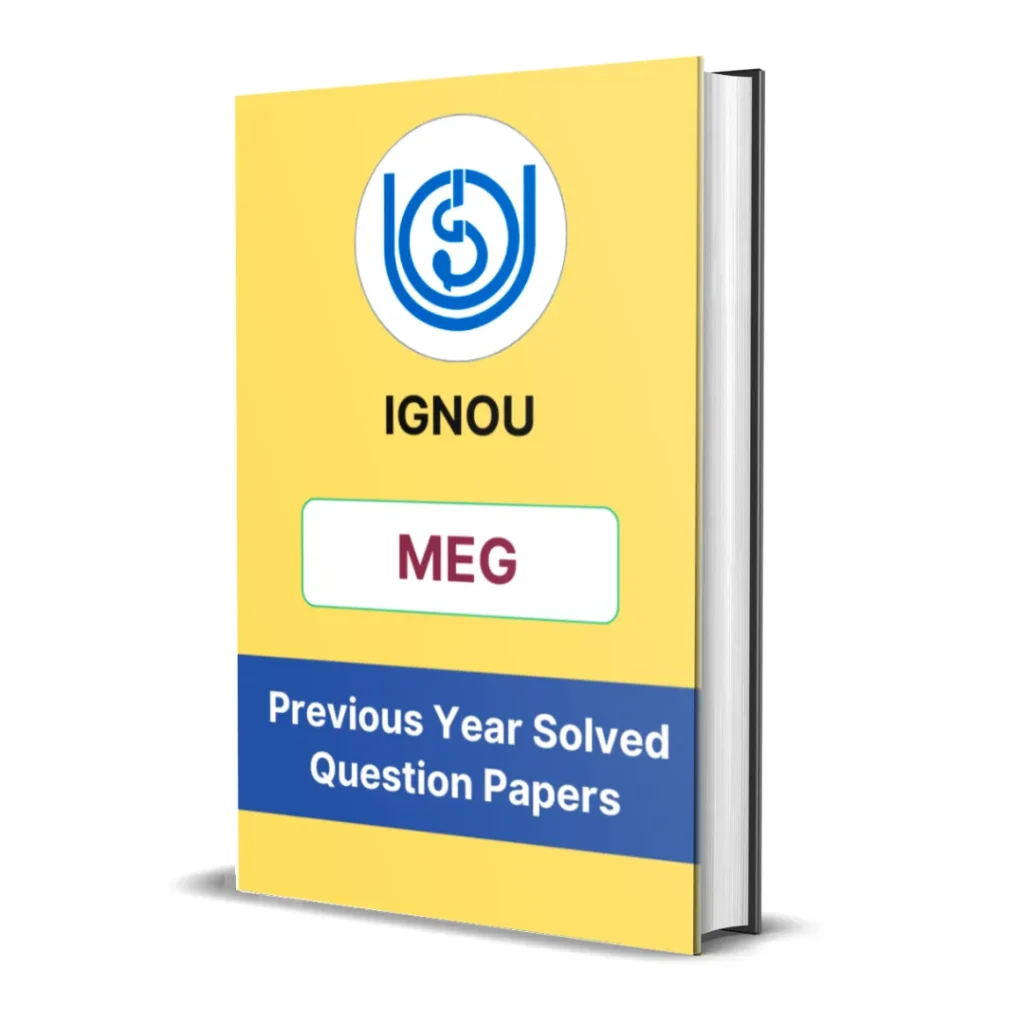IGNOU MEG-05 Block 6 Summary | Feminist Theories
- Last Updated On August 14, 2025
Table of Contents
Here you will get the detailed summary of IGNOU MEG 5 Block 6 – Feminist Theories.
We have provided the summary of all units starting from unit 1 to unit 6.

Introduction
IGNOU MEG-5 Block 6 explores Feminist Theories, highlighting how gender, patriarchy, and power relations shape literature, culture, and society. This block introduces students to foundational texts and key thinkers in feminist criticism from both Western and Indian contexts. The units examine how women’s experiences have been historically marginalized and how feminist literary criticism has emerged as a powerful tool to reclaim women’s voices, challenge literary canons, and analyze the representation of gender. From early advocacy by Mary Wollstonecraft to the nuanced theories of Virginia Woolf, Simone de Beauvoir, and Elaine Showalter, the block traces the evolution of feminist thought. It concludes with a focus on the unique feminist concerns in India, including caste, class, and religion, making the study both global and locally relevant.

Unit 1 – Features of Feminist Criticism
This unit outlines the core principles and concerns of feminist literary criticism. It explains how feminist theory critiques the patriarchal structure that has dominated literature and society for centuries.
Key features:
-
Focus on gender as a category of analysis in literary studies.
-
Critique of the male-dominated literary canon and its portrayal of women.
-
Emphasis on recovering lost or forgotten women writers.
-
Analysis of women’s experiences, language, and subjectivity.
-
Challenges the binary thinking (man/woman, mind/body, reason/emotion) often used to devalue femininity.
The unit also explains how feminist criticism evolved over three key phases:
-
Liberal feminism – equal rights and representation.
-
Radical feminism – structural critique of patriarchy.
-
Postmodern/Intersectional feminism – focus on race, class, caste, and sexuality along with gender.

Unit 2 – Mary Wollstonecraft: A Vindication of the Rights of Woman
This unit explores Mary Wollstonecraft’s groundbreaking work (1792) that laid the foundation for modern feminist thought.
Main arguments:
-
Women are not naturally inferior to men but appear so due to lack of education.
-
Advocates for rational education and moral independence for women.
-
Argues that women’s submissiveness and emotionality are social constructs.
Context and impact:
-
Written during the Enlightenment and French Revolution.
-
Critiques philosophers like Rousseau for their sexist assumptions.
-
Marked the beginning of feminist political philosophy.
This unit positions Wollstonecraft as a pioneer who argued that equality begins with intellectual and educational empowerment.
Unit 3 – Virginia Woolf: A Room of One’s Own
This unit discusses Virginia Woolf’s influential 1929 essay, which blends literary criticism, fiction, and feminist thought.
Key themes:
-
Women need economic independence (“money”) and personal freedom (“a room of one’s own”) to write.
-
Questions the absence of women in literary history—were they uncreative, or just silenced?
-
Imagines a fictional sister of Shakespeare to illustrate the barriers faced by talented women.
Innovations:
-
One of the first to use stream of consciousness and self-reflexive narrative in feminist argumentation.
-
Introduces the idea that language and literature are gendered spaces.
Woolf’s essay is central to feminist criticism for asserting that material and cultural conditions influence literary production.

Unit 4 – Simone de Beauvoir: The Second Sex
This unit covers Simone de Beauvoir’s 1949 landmark philosophical work that redefined how gender and womanhood were understood.
Famous assertion:
“One is not born, but rather becomes, a woman.”
Core arguments:
-
Gender is not biological but socially constructed.
-
Explores how women have been historically made into the “Other” in a patriarchal society.
-
Analyzes myths, literature, religion, and science to show how women are objectified.
Influence:
-
Bridged existentialist philosophy and feminism.
-
Became a foundational text for second-wave feminism.
This unit emphasizes Beauvoir’s role in showing how social institutions and culture create gender roles, making her one of the most influential feminist theorists.
Unit 5 – Elaine Showalter: “Feminist Criticism in the Wilderness”
This unit introduces Elaine Showalter’s concept of two modes in feminist criticism:
-
Feminist critique: Analyzing how women are represented in male-authored texts.
-
Gynocriticism: Studying women’s writing, language, and literary tradition from within.
Key ideas:
-
Male and female writing have different styles and themes, shaped by experience.
-
Advocates for building a female literary tradition.
-
Suggests that female creativity has been shaped by oppression, silence, and marginalization.
This essay is a cornerstone in feminist theory because it charts a methodology for studying women’s writing—not just as readers but as writers.

Unit 6 – Feminist Concerns in India Today
This unit shifts the focus to feminist issues in the Indian context, showing how feminism intersects with caste, class, religion, and region.
Key concerns:
-
Intersectionality: Indian women face multiple layers of oppression (patriarchy, casteism, communalism).
-
Highlights the Dalit feminist movement, which challenges both upper-caste patriarchy and mainstream feminism.
-
Explores the role of religion and tradition in shaping women’s lives and struggles.
-
Addresses violence against women, representation in media, education, and economic disparities.
The unit emphasizes that Indian feminism cannot be monolithic—it must be inclusive, diverse, and locally grounded. It also recognizes the contribution of Indian women writers like Mahasweta Devi, Kamala Das, and Bama in articulating feminist concerns.